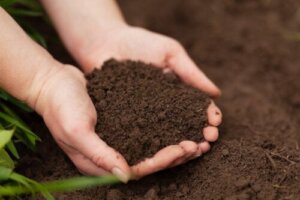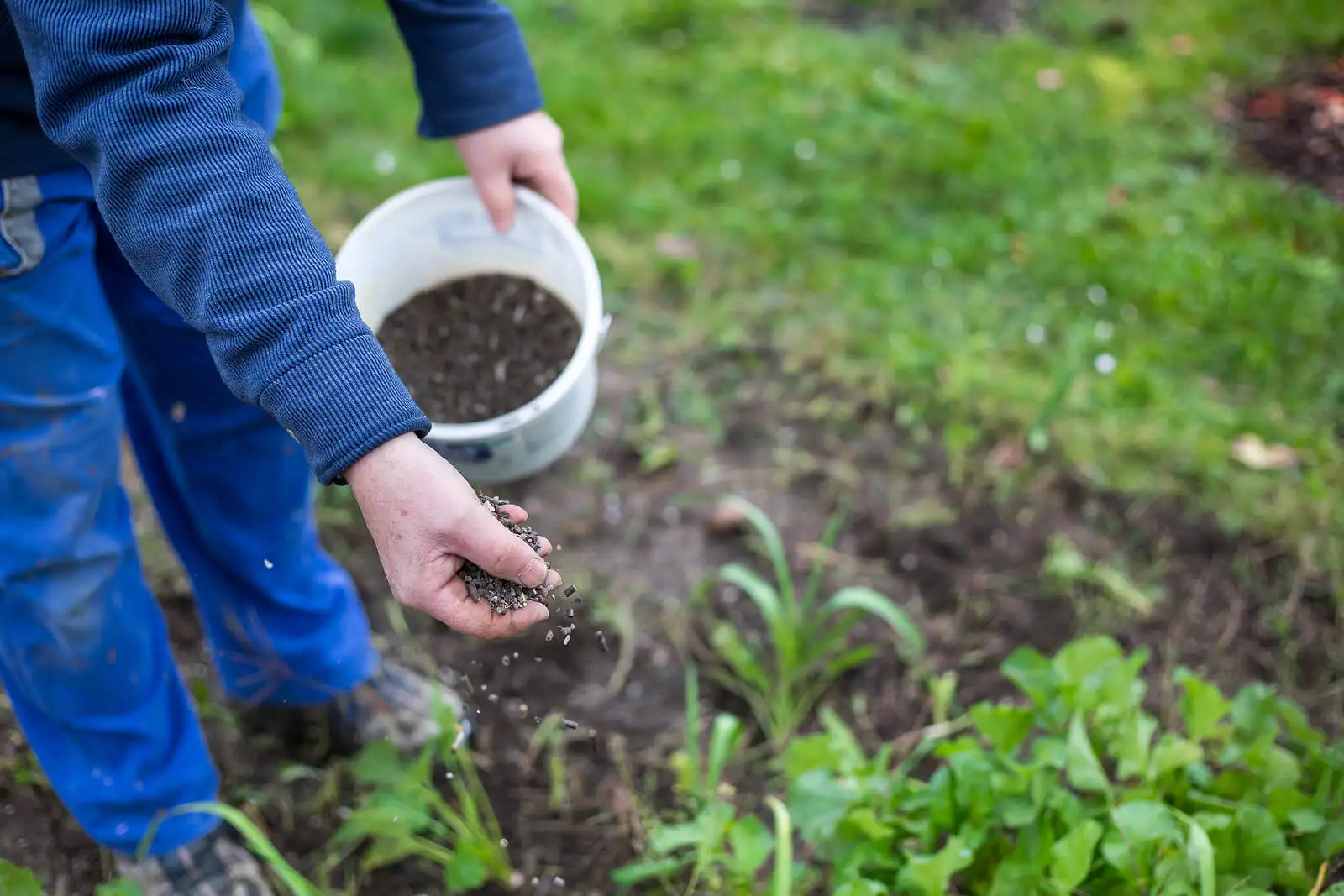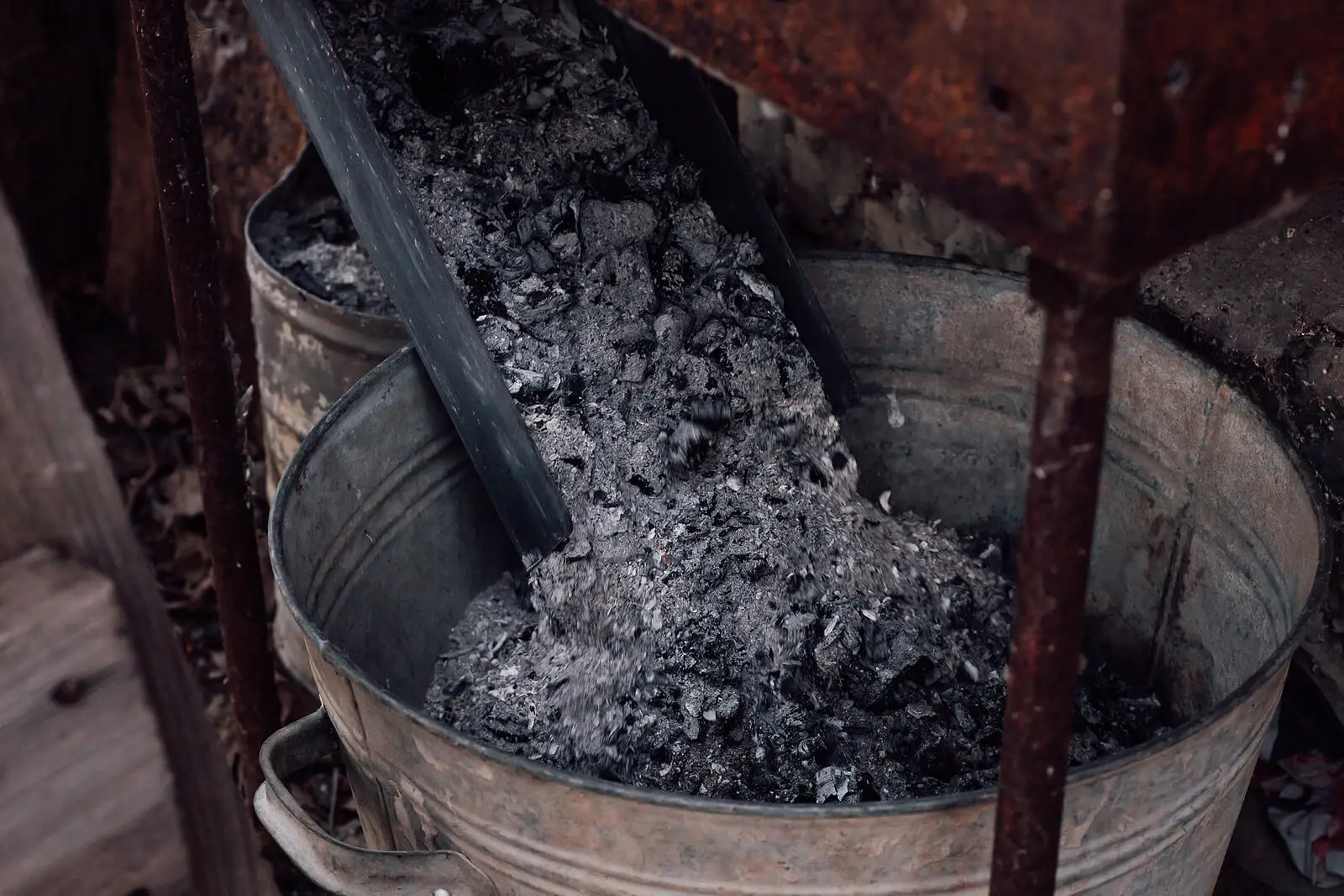How to Make Organic Bocashi Fertilizer

Perhaps you’re familiar with different types of fertilizers that can help enrich the soil. Natural fertilizer and organic compost are two alternatives that fulfill a double function: recycling organic waste and providing nutrients to the soil without the use of chemical additives. Have you heard about organic bokashi fertilizer?
The Food and Agriculture Organization of the United Nations states that this type of fertilizer is made from the fermentation of conveniently mixed dry materials. It stands out for its important contribution of nutrients to crops. Below, we’ll tell you what it contains and all about its benefits.
What is organic bokashi fertilizer?
The term ‘bokashi’ is of Japanese origin and translates as “fermented organic matter.” When we talk about an organic compost that goes through a fermentation process, we’re referring to a method of aerobic semi-decomposition (requiring oxygen) of organic waste microorganisms under controlled conditions that favor this process.
In this particular case, the compost is steamed to take advantage of the heat produced by aerobic fermentation. If the humidity and temperature are adequate, these microorganisms decompose the simplest components of the organic material: sugars, starches, and proteins that will benefit the soil.
In this way, the famous three M’s of expert gardeners can be covered:
- Microorganisms
- Minerals
- Organic matter

What are the benefits of bokashi fertilizer?
There are many advantages of applying this type of organic fertilizer. Below, we’ll take a look at the most relevant ones.
- It can be prepared in just two weeks while traditional compost can take up to 90 days.
- It provides a large amount of organic matter to the organisms found in the soil and enriches it even more. Although it may seem inert, the soil is full of tiny life.
- It’s cheaper than synthetic fertilizers and more environmentally friendly, as there’s no risk of contaminating the soil or water.
- It doesn’t produce toxic gases or a bad odor.
- It favors the regulation of contaminating agents in the soil, such as bacteria, fungi, etc.
We think you may also enjoy reading this article: How to Remove White Mold in The Soil From Plants
How to make organic bokashi fertilizer?
Now that we know what it is and what its benefits are, we’ll get down to work to make our own bokashi. So, what do you need to do?
Sifted soil
The soil must be previously sieved to prevent stones, wood, and clods from filtering through. This will be the site where all the microbial activity will take place. Ideally, it should be abundant in minerals, clay, and microorganisms.
Likewise, it will have the function of providing uniformity to the texture of the compost and contribute to distributing the humidity. The soil will have the function of absorbing and retaining the nutrients that will then go to the plants.
Rice husks for bokashi fertilizer
The main contribution of this material is silicon, which helps to control humidity. In addition, it strengthens the plants and prepares them better to face pests.
On the other hand, it increases the microbiological activity of the soil and is a main source of humus. It also provides phosphorus, potassium, and other minerals to a lesser extent. Thus, it’s an excellent regulator of soil acidity.
Chicken manure
Although this can be substituted by other types of manure from rabbits, cows, horses, etc., it must be ensured that the animals have not consumed antibiotics. Otherwise, there will be no microbial life in the soil.
Chicken manure will provide nitrogen, which is essential for organic fertilizers that go through the fermentation process. It also improves the soil by providing calcium, magnesium, iron, zinc, copper, and other essential nutrients.
Vegetable charcoal
This component facilitates a correct distribution of roots, air, humidity, and heat. As a porous material, it retains, filters, and releases the nutrients that plants need.
It also regulates the temperature of plants, which makes them stronger during low temperatures. When the charcoal decomposes, the much-prized humus is formed. The only suggestion is to choose a small piece of charcoal no longer than one centimeter.

Rock flour or ash for bokashi fertilizer
Its main contribution is minerals. You can get it from marble shops or quarries, and they won’t charge you for it because it is a waste of the work they do there. If possible, try to get ash from different types of stones and marbles.
Molasses
Molasses can be cane or beet molasses and its function is energetic. It will help in the microbiological reproduction and will leave its quota of potassium, phosphorus, calcium, and boron, among others. To add it to the mix, you can dilute it with water to make it easier to work with.
Yeast
Yeast makes up the microbiological base from which the reproduction of the organisms will begin. You can use bar yeast, powdered yeast, or bread sourdough.
Water for bokashi fertilizer
The water you are going to use shouldn’t contain chlorine because it would kill the microbiotic organisms. You can get it from springs or collect it from rain. Basically, just gather tap water and let it stand for about three days before using it.
Like this article? You may also like to read: How to Make Homemade Hanging Planters for Your Plants
Ingredients
- 1 bucket of 10 liters or similar
- 8 liters of water
- 12 kilograms of manure or chicken manure
- 12 kilograms of rice husks or straw
- 2 kilograms of charcoal
- 12 kilograms of common soil
- 1.2 kilograms of ashes or rock flour
- 1.2 kilograms of grams of rice bran
- 200 grams of molasses
- A little yeast
Instructions
- First, pour the water, yeast, and molasses into the bucket. This is to prepare the base of everything or inoculum. It’s necessary to stir, cover, and leave to act for about 24 hours.
- Then, it’s necessary to choose the place where the bokashi will be placed; it’s necessary to place the soil mixed with the charcoal in the base there.
- Now, add a layer of manure or chicken manure, rice husk, bran, and, finally, stone ash.
- Next, the ferment that has been left to rest since the previous day is added. It’s necessary to distribute it uniformly. Once this is done, it’s left to rest for another day.
- For two weeks, it’s necessary to stir the bokashi in both the morning and evening.
An important thing to note is that the mixture should not give off rancid smell, as this could indicate that something has gone wrong.
Bokashi fertilizer: What should you remember?
Bokashi fertilizer stands out among organic fertilizers due to its important properties. To use it, just mix it with the soil or substrate to be used for planting, either in the ground or in pots. It’s suitable for fertilizing home gardens.
All cited sources were thoroughly reviewed by our team to ensure their quality, reliability, currency, and validity. The bibliography of this article was considered reliable and of academic or scientific accuracy.
- Ramos Agüero, D., & Terry Alfonso, E. (2014). Generalidades de los abonos orgánicos: Importancia del Bocashi como alternativa nutricional para suelos y plantas. Cultivos tropicales, 35(4), 52-59.
- Ramos Agüero, D., Terry Alfonso, E., Soto Carreño, F., & Cabrera Rodríguez, J. A. (2014). Bocashi: abono orgánico elaborado a partir de residuos de la producción de plátanos en Bocas del Toro, Panamá. Cultivos Tropicales, 35(2), 90-97.
- Agüero, D. R. (2014). Revisión bibliográfica. Generalidades de los abonos orgánicos: importancia del bocashi como alternativa nutricional para suelos y plantas. Cultivos Tropicales, 35(4), 52-59.
- Bautista-Cruz, A., Cruz Domínguez, G., & Rodríguez-Mendoza, M. D. L. N. (2015). Efecto de bocashi y fertilizantes de liberación lenta en algunas propiedades de suelos con maíz. Revista mexicana de ciencias agrícolas, 6(1), 217-222.
- Gómez, D., & Vásquez, M. (2011). Abonos orgánicos. PYMERURAL Y PRONAGRO.
- Sepúlveda, S. (2021). Consejo al agricultor: Ventajas del bocashi. Cápsula Radial INIA La Platina.
This text is provided for informational purposes only and does not replace consultation with a professional. If in doubt, consult your specialist.








